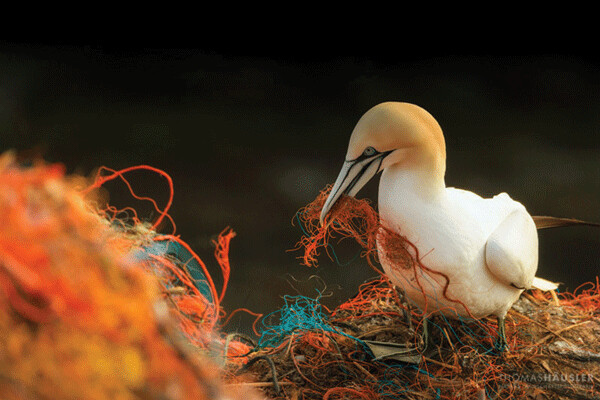Does plastic have any kind of future?

Dear EarthTalk: Considering all the well-publicized problems with plastic in our oceans, do you think that plastic has any kind of future? - Lea Mauduit, via EarthTalk.org
As much as environmentalists shudder at the proposition, it looks like plastics are here to stay. Most experts agree that there’s no way to get humans to stop using plastic even if it would benefit the environment. This modern petrochemical-derived material is inexpensive to make, easy to form into various shapes and sizes, and is tough and strong enough to be used in a wide range of applications. We all make use of it in various forms hundreds of times a day just going about our business.
“Plastics are the workhorse material of the modern economy,” reports the consulting firm McKinsey & Co., adding that global production has surged from 15 million to 311 million metric tons yearly between 1964 and 2014. That number is projected to double to over 600 million metric tons in the next 20 years.
But the functional benefits of plastic come at a steep price, mostly as non-recyclable waste. Single-use plastics represent a quarter of the total volume of plastics produced and around 95 percent of the value of plastic-packaging material. McKinsey estimates that the single-use plastics industry is worth some $80-$210 billion annually. Plastic’s useful life is often less than a year, yet the material lives on for centuries.
Sadly, only 14 percent of plastic, single-use or otherwise, is recycled, even though much more of it could live another life if recycling processors were equipped and willing to handle it. Europeans manage to re-use a third of their plastic waste; the U.S. has only been able to re-use 10 percent.
Some are looking to so-called “bio-plastics” made from plant wastes instead of petroleum as one solution, but experts worry that even these nouveau greener formulations still won’t break down and go away, especially out at sea. “A lot of plastics labelled biodegradable, like shopping bags, will only break down in temperatures of 50°C and that is not the ocean,” says Jacqueline McGlade of the UN Environment Programme. “They are also not buoyant, so they’re going to sink, so they’re not going to be exposed to UV and break down.”
According to McKinsey, we need to start applying “circular-economy” principles to global plastic-packaging if we want to stem the tide of plastic waste. To get this ball rolling, UK-based sailor Ellen MacArthur, who set the world record in 2005 for fastest solo circumnavigation of the globe, is using her personal foundation to fund the Circular Design Challenge to inspire creative solutions in reducing plastic packaging. Ten early-stage ideas will each receive $10,000 in funding to help get their concepts into production, while bigger operations with more established solutions already in the works can apply for one of three $100,000 awards to further prototyping and production goals. While this funding may represent a drop in the bucket of the kind of resources we’ll need to beat the problem of plastic waste, it sets the wheels in motion to thinking sustainably about the future of plastics and the long term health of our environment.
CONTACTS: McKinsey & Company, www.mckinsey.com; UN Environment Programme, www.unenvironment.org; Ellen MacArthur Foundation, www.ellenmacarthurfoundation.org; Circular Design Challenge, challenges.openideo.com/challenge/circular-design/brief.
EarthTalk® is produced by Roddy Scheer & Doug Moss for the 501(c)3 nonprofit EarthTalk. To donate, visit www.earthtalk.org. Send questions to: question@earthtalk.org.
